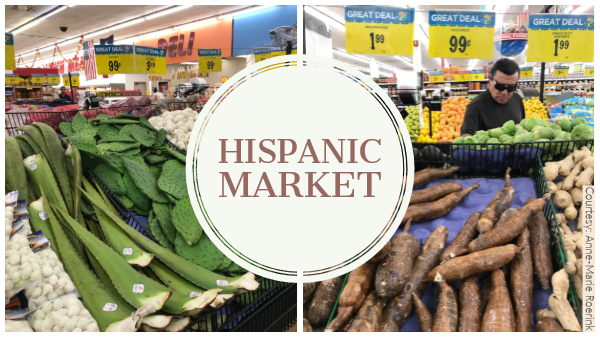It makes sense that as the Hispanic community grows across the United States, Hispanic retail stores grow along with them. But putting data to this feeling is tougher than many realize.
Anne-Marie Roerink of 210 Analytics, which creates the Power of Produce report for the Food Marketing Institute, says data for specialty stores, especially those of Hispanic or Asian formats, is difficult to find.
“However, looking at the popularity of Hispanic format stores and the expansion we’ve seen among some of the major Hispanic grocery chains, it’s fair to say they’re thriving,” she says.
Demographics
We all know Hispanics represent a growing group of shoppers in the United States, but here are some numbers for perspective: according to the U.S. Census in 2017 there were 59 million people in the United States who classified themselves as Hispanic, representing 18 percent of the population. The Census Bureau projects this will increase to 68 million by 2025 (20 percent), 88 million by 2040 (23 percent) and 111 million by 2060 (28 percent).
Another factor in Hispanics’ growing influence as shoppers is they represent the youngest ethnic group in the United States and have been for several decades, but according to Pew Research, the group has seen the largest increase in median age in the past 10 years, from 27 in 2008 to 30 in 2018.
This means as all retail and produce companies lock onto millennial shoppers, the percent of the age group calling themselves Hispanic is 21 percent, so it’s no wonder that Hispanic grocery chains are finding success with this generation.
According to Kantar Consulting’s 2018 Monitor study, Hispanics over-index all other ethnic groups in cultural connection elements such as family, food, recipes, and language. The study also found that 92 percent of Hispanics believe it feels natural to live in the United States and embrace its culture but also retain the culture of their origin.
Roerink says we need to look beyond the demographics to explain the growth of Hispanic retail stores. “While an obvious explanation of their success is the rising share of consumers with Latino heritage, I think there is more to the story.
“Increasingly, success in retail hinges upon being known for something,” she continues. “This can be specialty/organic, deli prepared, private brand, value, premium, health and well-being, and also a deep ethnic item assortment as seen in Asian or Hispanic formats. It makes the store a destination with a reputation that far exceeds the current shopper base.”
The Produce Marketing Association commissioned a study of U.S. Hispanic purchase behavior from MSL Group in 2017, which showed Hispanics’ buying power is expanding faster than its population. It also found Hispanic households tend to enjoy speaking Spanish, cooking, and place more emphasis on family time.
This is a multi-part spotlight feature on the Hispanic produce market adapted from the October 2019 issue of Produce Blueprints.



